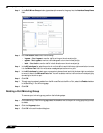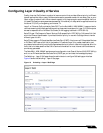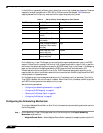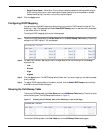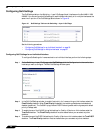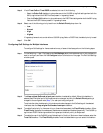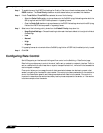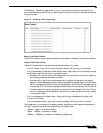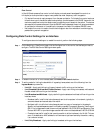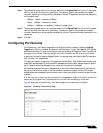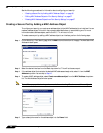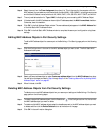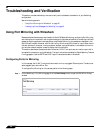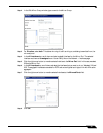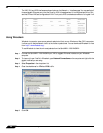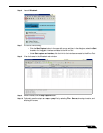
Configuring Switching
34
SonicOS 5.7: Advanced Switching Feature Guide and Screencast Tutorial
Flow Control
In SonicOS, back-pressure flow control on half-duplex ports and pause frame-based flow control on
full-duplex ports are provided to support zero packet loss under temporary traffic congestion.
• Full-duplex flow control requires support from the peer end station. Full-duplex flow control works as
follows: when a port’s free buffer space is almost empty, the devices send out a PAUSE frame with the
maximum pause time to stop the remote node from sending more frames into the switch. The devices
also respond to the pause command. Once the PAUSE frame is detected, the port will stop transmission
of new data for the amount of time defined in the pause time field of the received PAUSE frame.
• Half-duplex flow control is used to throttle the throughput rate of an end station to avoid dropping
packets during network congestion.
Configuring Rate Control Settings for an Interface
To configure rate control settings or to enable flow control, perform the following steps:
Step 1 On the Switching > Rate Control page, click the Configure icon in the row for the interface you want to
configure. The Edit Rate Control Settings window opens.
Step 2 To enable flow control on this interface, select the Enable Flow Control checkbox.
Step 3 To set the mode for limiting the bandwidth of ingressing frames, select one of the following from the
Ingress Mode drop-down list:
• Limit All – Apply rate limiting to all types of network traffic arriving on the interface
• Limit Broadcast, Multicast and Flooded Unicast – Apply rate limiting to broadcast, multicast and
flooded unicast traffic arriving on the interface
• Limit Broadcast and Multicast – Apply rate limiting to broadcast and multicast traffic arriving on the
interface, where:
–
Broadcast traffic is traffic that is simultaneously sent to all computers in the network, typically to
announce shared services and state information.
–
Multicast traffic is traffic that is simultaneously sent to a group of computers in the network.
Specific multicast addresses are used for different purposes. For example, Spanning Tree Protocol
802.1D for bridges uses the well-known multicast address 01-80-C2-00-00-00, and Spanning Tree
Protocol 802.1AD for provider bridges uses the well-known multicast address 01-80-C2-00-00-08.
–
Flooded unicast traffic is traffic that is sent by a switch to all the interfaces in the VLAN. This can
occur if the destination MAC address for a frame has not yet been learned by the switch, making
it an unknown unicast.
• Limit Only Broadcast – Apply rate limiting to broadcast arriving on the interface



